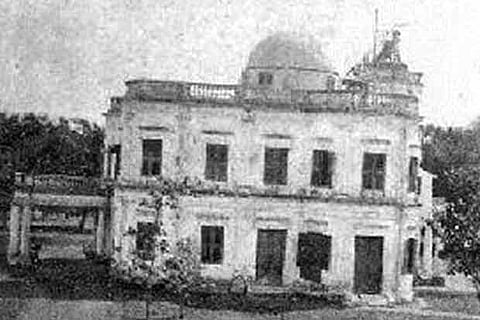

Chennai
The storm — a member of the North-East monsoon club cunningly decided to strike the city when the guard was on leave! The Madras Meteorological Laboratory was shifting to a new observatory in Meenambakkam in 1943 with their equipment. And no timely warnings were issued.
Madras experienced its worst floods in 1943, after the lake in the midst of Madras has been filled to create housing colonies. The long tank stretched about 6 km from the Adyar River to Loyola College. Not only could the tank take in the excess flow from the rainwater drains, but when it overflowed the Mambalam canal took the water to Adyar. It was a perfect system to avoid floods.
To meet the demands of a growing population, plans were drawn up from 1923 to reclaim 1,600 acres from the Long Tank to create the Mambalam Housing Scheme that gave us Thyagaraya Nagar. But reclamation went on until 1941 when 54 acres were reclaimed for the lake area and Loyola College campus. (Reminders of the lake are only found in names like Lake Area, Tank Bund Road and Lake View Road).
The 1943 cyclone was a lesson for the city on how it would survive without its greatest watershed. In October 1943, Madras registered over 20 inches of rainfall in less than 24 hours. It was just the beginning of a catastrophic week. An unrelenting downpour that lasted around six days led to breaches in swollen lakes and rivers, and soon roads were under waist-high water.
The rivers added to the melee. The Cooum
broke its embankments and gushed forth into Kilpauk, Purasawalkam, Perambur, Mount Road, Egmore, Chintadripet and Pudupet - throwing life there into complete disarray. The Adyar River also swelled and overflowed, but the damage was restricted to the areas in its vicinity.
Thousands were rendered homeless and loss of lives and property was rampant. Reports of the flood havoc read like the script of a horror movie! Slum dwellers around Madras and working-class localities bore the brunt of the flood fury. Their huts and tenements destroyed, they were sheltered in Corporation schools, Government buildings and marriage halls. The Ripon Building overflowed with residents of Pudupet and Chintadripet. In Eg more, as the flood waters rose dramatically, residents abandoned their houses and took shelter in the wagons stationed in the railway yard. To rescue people stranded in the floods, catamarans and improvised floats were employed.
In addition, Madras had a huge bovine population. Rescue workers tried their best to save cattle. But huge numbers of dead cows and bulls were swept down the rivers. Haystacks went with the tide of the rushing waters. In a finder’s keeper’s formula, furniture and household items could be collected from the banks of the rivers.
The authorities quickly repaired the breaches in the embankments of water bodies but wartime regulations prevented them from
implementing permanent solutions (The Government decided to wait for the War to end before fortifying Buckingham Canal’s west flood bank — from Ennore Lock to Thiruvottiyur Bridge).
The crisis, however, brought people together. People from all walks of life pitched in. Citizens formed groups that fed the homeless. The Mayor’s Flood Relief Fund, instituted in the 1930s was resurrected and opened for donations to which the Council of the Madras Corporation transferred Rs. 50,000.
Various political groups buried their differences and worked in a partnership which vowed to help Madras return to normalcy. The bonhomie spread across the commercial world too. When other newspapers could not be printed, a popular English daily in the city, to which power was restored first, offered to print other papers at their press.
The government instituted an inquiry based on engineer AR Venkatachary’s report, (which felt the sandbars at the end of the rivers, Cooum and Adyar, affected the drainage) the government provided a sand pump at the river mouth of the sandbar. It has now been replaced by earth movers.
Life went on. Many children were born during the cyclone, adding risk to the deliveries. Dancer Balasaraswathi delivered her only child Lakshmi when the skies were pouring. Like babies, Wars too had least regard for rains. Since the power was cut off, the much anticipated Japanese bombing of Madras went unnoticed. The raid warning alarms did not work and bombs from a Japanese plane sounding like mere thuds were attributed to the imagination by those who chanced to hear it.
— The writer is a historian and an author
Visit news.dtnext.in to explore our interactive epaper!
Download the DT Next app for more exciting features!
Click here for iOS
Click here for Android